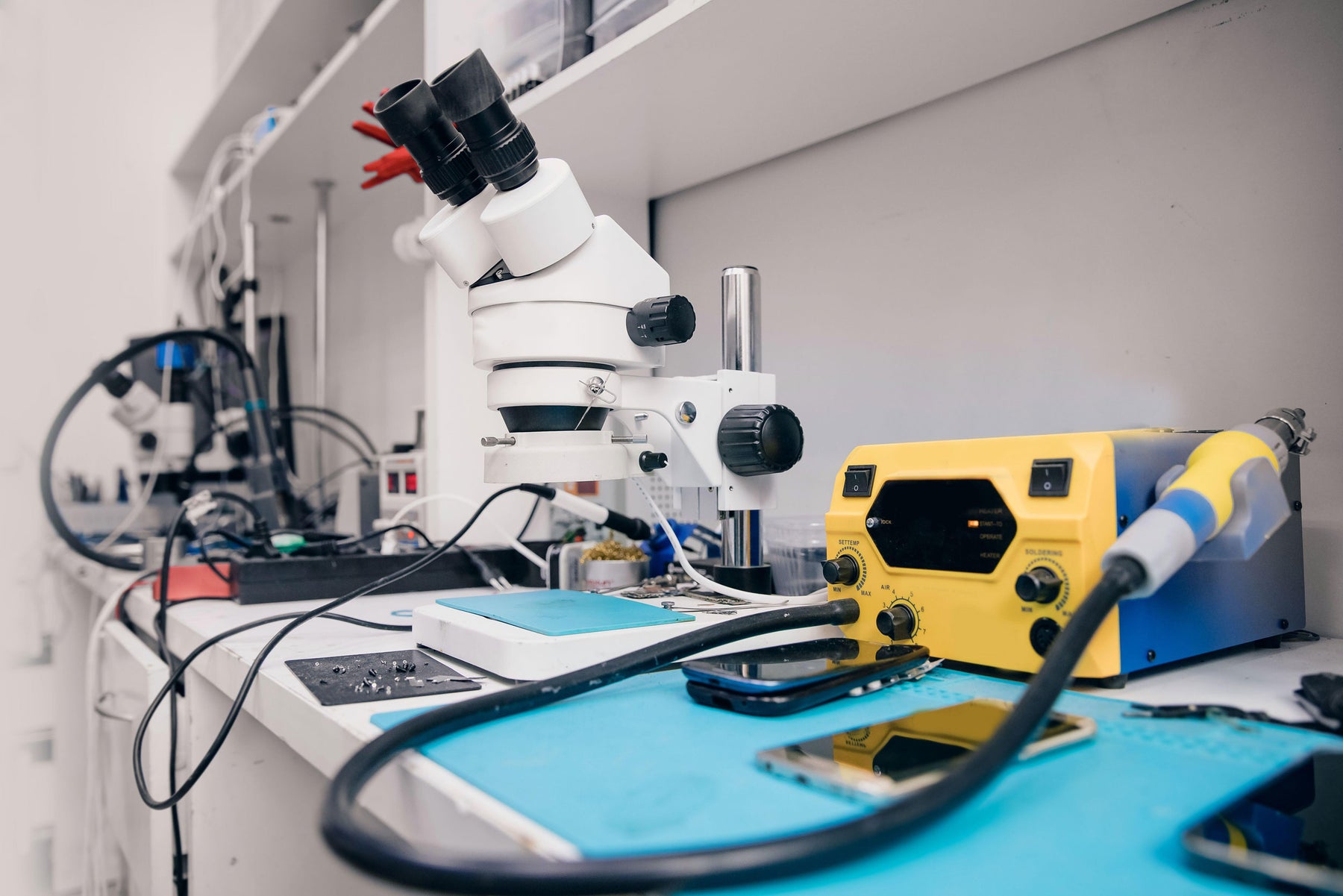
Micro soldering microscopes
Electronic components are becoming smaller and more complex every year.
There are obvious benefits – improved performance, increased efficiency, greater portability – but there are also disadvantages.
One of the drawbacks is that it’s becoming increasingly difficult to solder the ever-shrinking components with a standard soldering setup.
These days, it’s almost essential to have a micro soldering microscope.
What is soldering?
Soldering is the process of joining two metals using a filler material, known as ‘solder’.
The practice is thousands of years old. Once used to mend broken swords and ancient Roman water pipes, soldering is now used in everything from plumbing to jewellery and mobile phone repairs.

What is micro soldering?
So, what is micro soldering, and how is it different? The answer is simple – it’s the same process, but on a smaller scale.
Components such as surface mount devices (SMDs) are now genuinely tiny, sometimes even smaller than a grain of sand, you might want to know what the Best Microscope for SMD Soldering and Electronics Repair is.
It’s just not practical to try to solder anything so small with the naked eye, or standard soldering tips.
To adapt to the smaller components, the soldering community turned to microscopes and finer soldering equipment.
Essentially, micro soldering is just soldering under a microscope.
What to look for in a micro soldering microscope
There are a few key qualities you should consider.

Working distance
It may seem obvious, but you need to be able to comfortably fit your soldering tools and circuit board under your microscope.
The amount of vertical space you have to work in is known as the ‘working distance’, or sometimes the ‘focal distance’ of a microscope.
It’s a measure of the distance between the microscope objective lens and its focal point, and not simply the amount of space below the lens. After all, you need your circuit board to be in focus.
A working distance of at least 50mm is a good rule of thumb. The larger the working distance, the more room you’ll have to operate, and the easier it will be to inspect or handle what you’re working on.
Magnification
Most micro soldering is done at low magnifications, often between 2.5x and 20x
It may sound counter-intuitive, but higher magnifications are not necessarily better. Excessive magnification can actually be worse – reducing your field of view and working distance, and sometimes degrading the image quality.
If you need to adjust the magnification range of your microscope, you can use a Barlow lens to increase or decrease the magnification as needed.
Digital versus stereo
There are two main types of microscopes used in micro soldering – digital and stereo.
Digital microscopes display your work on a screen, whereas with stereo microscopes you look directly at your work through two eyepieces.
The most important difference is that stereo microscopes provide a sense of depth perception, a significant advantage when working with 3D objects like SMDs. But they are usually more expensive.
Aside from depth perception, the right microscope for you will depend on your personal preferences and budget.

Some people prefer using a screen so they can work with a better posture, while others find it difficult to solder without looking directly at their work. Note too that some cheaper digital microscopes can have a visual ‘lag’ that makes delicate work difficult.
Other factors to consider when choosing a micro soldering microscope include:
- Microscope camera for recordkeeping
- Sturdy stand to prevent vibrations
- LED ringlight for adequate illumination while you work
A good micro soldering microscope will let you solder with precision and comfort. Just be sure to research what’s on offer so you can find the right microscope for your needs.
